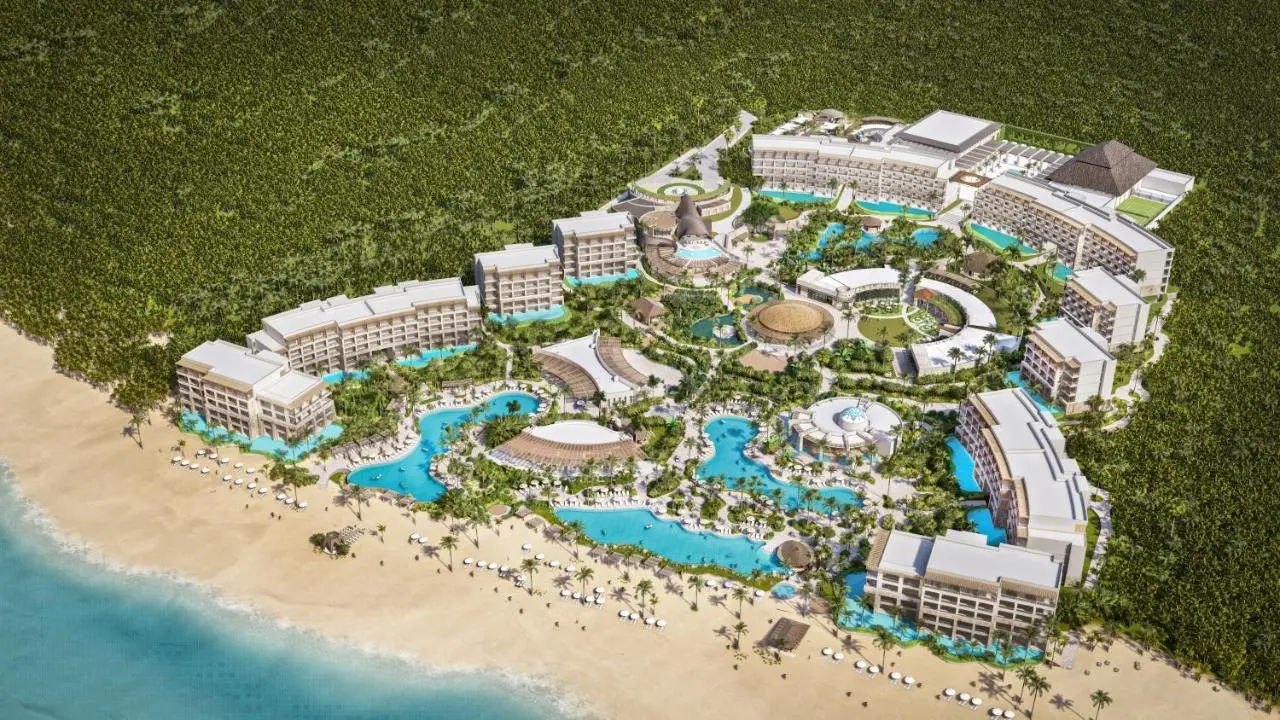A buzzing metropolis feeling as well as idyllic kilometre-long cycle paths to soothe the mind and work the body? Does this go together at all?
In Leipzig and the surrounding region, cyclists will find exactly this combination. With its green belt, its well-developed network of paths and its growing awareness for sustainable mobility, the Leipzig Region is ideal for bike enthusiasts.
These are some of the reasons why Leipzig is the ideal place to host the Velo-city 2023. The event is organized by the European Cyclists’ Federation (ECF), the city of Leipzig and Leipziger Messe. From 9-12 May 2023, the world cycling summit will bring together over 1400 participants, 300 speakers and 79 exhibitors under the main theme #LeadingTheTransition. Moreover, the conference exhibition showcases the latest innovations for a better cycling experience in cities and beyond. Therefore, the event is a must-see for everyone who loves biking. The velo-city 2023 in Leipzig will show what is possible when you shape the future with courage and energy.
Leipzig is not only a strikingly green city, it also has a real rarity to offer. One of the largest floodplain forests in Central Europe runs right through the city and into the region. Some of the cycling routes lead through the city of Leipzig, but also through a fascinating lake landscape, historic towns, tranquil villages, forests, floodplains and past fairytale-like castles and palaces. Thanks to the well-developed network of paths and low gradients, many individually customisable circular tours are possible. The varied routes offer exciting excursions for everyone – from sports enthusiasts to families with children. Here is a selection of five very popular cycle paths in the Leipzig region.
Neuseenland (New Lakeland) Cycle Route – approx. 100 km
At the gates of the city, more than 20 lakes with a combined surface area of 70 km² have something to suit every holidaymaker’s taste. If you are interested in beaches and relaxing, but also action and culture, Leipzig’s New Lakeland area is the perfect place for you.
The Neuseenland Cycle Route passes nine of the 20 picturesque lakes south of Leipzig and allows cyclists to experience the multifaceted landscape and structural change of the former open-cast mining landscape. The circular route starts at Lake Markkleeberg and continues along Lake Störmthal. You cycle through fields and meadows to Lake Hain and past smaller lakes to Borna. Here you can take a break to explore the old town and the Emmaus Church, which was moved as a whole building to another location in an one-off action to make way for the open-cast mine. The route continues to Lake Haselbach, on whose shores you will find wonderful sandy beaches for swimming. Along the river Schnauder you cycle on to Groitzsch and Pegau, two historic towns. Here it is worth making a detour to the ruins of the ancient Wiprechtsburg and the baroque Wiederau Castle. The route now leads along the river White Elster to Lake Zwenkau and along the shore to Lake Cospuden, which offers many attractions and opportunities for sporting activities. From the north shore you reach Markkleeberg again, the starting point of the tour. We recommend a detour to Agra Park Markkleeberg with its beautiful English landscape garden. If you’re in need for a delicious refreshment, head over to Brot & Kees – you won’t regret it!
Obstland (Fruit Country) Cycle Route – approx. 58 km
The Obstland cycle route leads through Saxony’s largest fruit-growing region around Ablaß, Dürrweitzschen, Leisnig, Sornzig, Mügeln and the river Mulde Valley. It is composed of three thematic sub-routes and can be travelled via individual smaller stages or the main route. On the latter, the route leads through the culturally and historically rich landscape of Saxony’s fruit country. You can start the circular route in Leisnig. The town is closely associated with Mildenstein Castle, which was built in the 10th century and is one of the oldest castles in Saxony. You leave Leisnig along the river Freiberger Mulde, passing forests and orchards. A visit to Buch Monastery is worthwhile, where you can experience the life of the monks and their fruit-growing tradition. This goes back to the 12th century, when the monks initially planted small monastery gardens with fruit trees for self-sufficiency. The path leads another four kilometres along small farm shops selling regional fruit, vegetables and juices to Mügeln. Here visitors can experience the “World of Kaolin Experience” exhibition in the railway station, where the world of “white gold” and the history of the narrow-gauge railway are vividly presented. A stopover is also recommended at Sornzig Monastery, the historical cradle and at the same time the place of origin of fruit growing in the Mügeln region. The trail continues towards Dürrweitzschen, where you will find an Obstland info point about the fruit country next to a farm shop selling Sachsenobst products from Saxony. From here the trail continues through rural idylls, passing sleepy villages with magnificent views over the wide landscape. The last stop is Leipnitz, a former knight’s estate and church with a pilgrim’s gravestone from the 13th century. From here you can cover the last kilometres of the tour to Leisnig.
Mulderadweg (Mulde River Cycle Path) – in total approx. 400 km
If you cycle along the Mulde, you embark on a journey through unspoilt nature and through the past. The Mulde is a river with many faces and two sources, which has shaped its surroundings since the Middle Ages. The section Zwickauer Mulde has its source in Schöneck (East Saxony) and follows the river Mulde for about 160 kilometres, until it meets the 120-kilometre-long river section Freiberger Mulde. It has its origin in the Bohemian Ore Mountains, more precisely in the Czech town of Moldava. Together, the two arms of the river Mulde unite in Sermuth (Saxony) and form a mighty stream (Vereinigte Mulde) that 120 kilometres later, flows into the river Elbe near Dessau.
Cyclists can discover the Mulderadweg on three different routes (Zwickauer Mulde, Freiberger Mulde and Vereinigte Mulde) with a versatile landscape. In total, the more than 400-kilometre-long cycle path stretches from Dessau to Schöneck and offers an unforgettable journey along the picturesque banks of the Mulde. In addition to scenic idylls, mighty castles, medieval towns and numerous cultural and historical sights line the popular Mulde cycle path.
If you choose to follow the trail of the Vereinigte Mulde (river United Mulde), you start in Sermuth and follow the Mulde Cycle Path through small forests and extensive fields. The historic town Grimma with its Renaissaince city hall and its pretty scenery is definitely worth a visit. The imposing Gattersburg, a fairytale-like villa of a paper manufacturer, sits enthroned at the landing stage of the river Mulde. Upstream, stop by the Nimbschen monastery ruin, which commemorates the flight of Katharina von Bora, Martin Luther’s later wife and companion. From there, a historic cable ferry takes you to the small village of Höfgen, the “village of the senses”. The route continues along pretty villages and cites to the adjoining Dübener Heide (Düben Heath), including the spa town of Bad Düben. The trail then leads to the Lake Groitzsche and the associated Pouch peninsula. The last part of the cycle path crosses the former mining district of Bitterfeld and ends at Dessau, famous for its Bauhaus history.
Leipzig-Elbe Cycle Route – approx. 84 km
The Elbe Cycle Route is the most popular one in Germany and stretches from the borders of the Czech Republic to the German North Sea. If you want to expand your stay in the Leipzig Region with a trip to Hamburg or Dresden by bike, the Leipzig-Elbe Cycle Route is just right for you. Although the river Elbe does not pass directly through Leipzig, you can easily get there from Leipzig by bike. The track is a bit of an insider tip and can surely keep up with its ‘big brother’. Along the route, pretty villages alternate with the idyllic countryside. Meadows, forests, ponds and river wetlands dominate the scenery. Some further highlights are the landscape park of Machern Palace that was designed in 1782, numerous Saxon village churches and the old town of Wurzen, featuring mills whose towers can be seen from afar. Overall, the region is full of mills and also offers many opportunities to take a dip in natural ponds and lakes. Because the route is mainly asphalted, the path is also recommended for biking with children.
Saxony “M” Route – approx. 285 km
The cycle route is about 285 km long and winds through the district of North Saxony in the shape of an “M”. It begins in Leipzig and leads clockwise along the Elster Cycle Path to Schkeuditz, along the Green Ring to Lake Schladitz, along the Coal Steam Route to Delitzsch and then further along the Torgisch Cycle Path through Bad Düben to Torgau. Here, a visit at the Hartenfels Palace is highly recommended. 500 years of Reformation history slumber within the walls of this architectural masterpiece, which was built in the 15th century and served as the main and secondary residence of many Saxon electors. Today, the palace houses numerous sights such as the chapel, which was consecrated by Martin Luther in 1544, as well as the Wendelstein and the Hausmannsturm in the inner courtyard. The “M” route then crosses the Elbe bridge and follows parts of the Elbe cycle path as well as the Döllnitztal cycle route via Mügeln to Wermsdorf. If you can, plan a stop at Hubertusburg Palace, a Baroque masterpiece that was once one of the largest hunting lodge complexes in Europe. Finally, the route leads along the Mulderadweg from Wurzen to Eilenburg and via Taucha back to Leipzig. Due to the good connections to public transport, the route can also be cycled in several stages.
Click here to see a list of more things to do in Leipzig.









